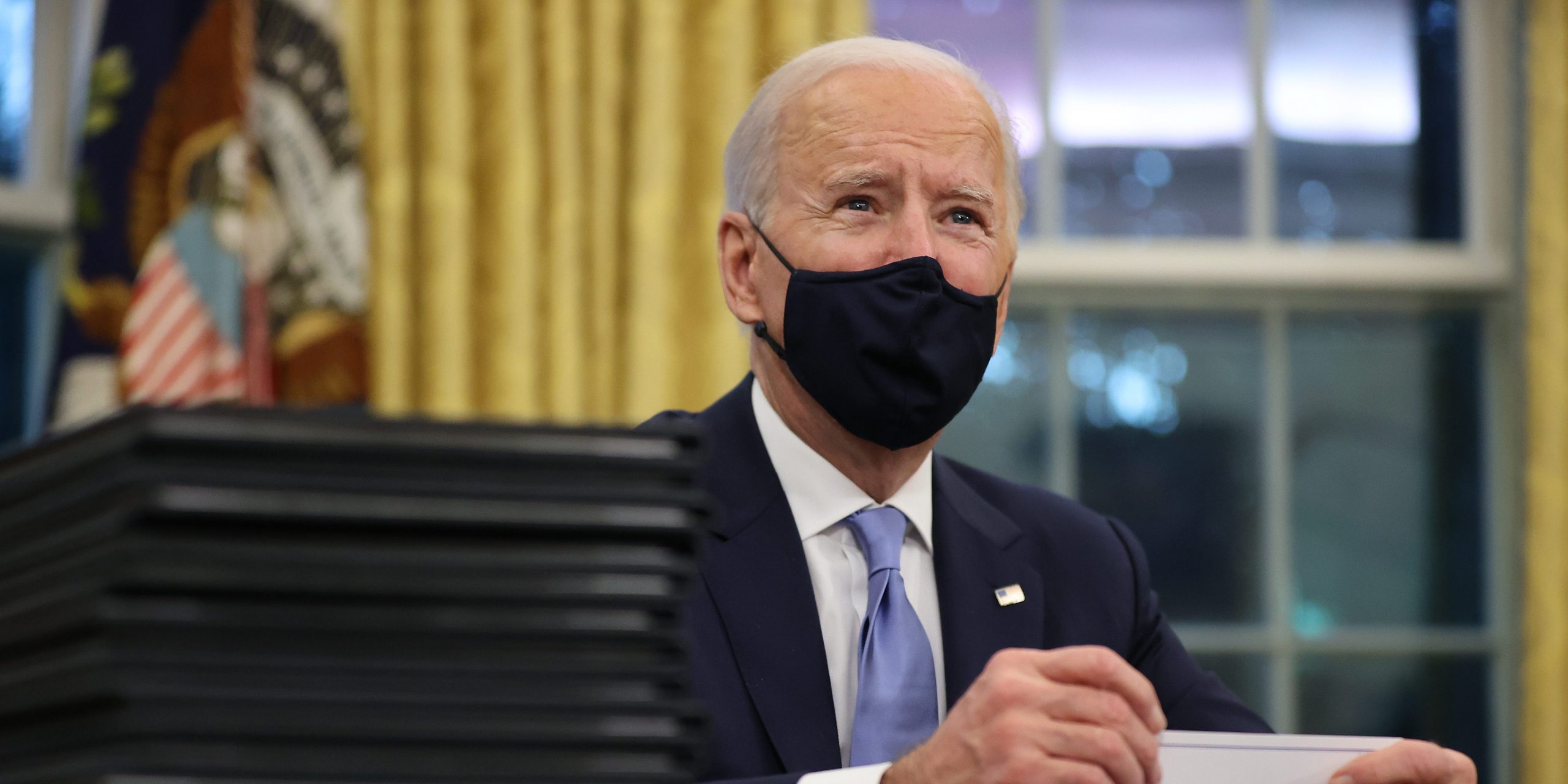
- January’s payrolls report showed disappointing job gains and more Americans leaving the labor force.
- The report amplified calls backing President Biden’s $1.9 trillion stimulus plan.
- The absence of new aid risks permanent labor-market scarring, a former Fed economist said.
- Visit the Business section of Insider for more stories.
The January jobs report painted a gloomy picture of the US labor market’s recovery. And that could be just what the Biden administration needs to justify its $1.9 trillion stimulus package.
Initial readings of the Bureau of Labor Statistics’ Friday report were somewhat encouraging. The US added 49,000 nonfarm payrolls last month, a sharp reversal from the losses seen in December. The unemployment rate also fell to 6.3% from 6.7%.
Closer inspection, however, shows an economy still struggling to rebound. Economists surveyed by Bloomberg expected 105,000 new payrolls last month, more than double the additions actually seen. The number of permanent layoffs increased. Payroll growth for December and November were revised lower. And much of the decline in the unemployment rate was linked to more Americans ending their search for work and falling out of the labor force.
For all intents and purposes, the labor market’s recovery has fully stalled with 10 million jobs still lost to the COVID-19 recession, Claudia Sahm, a former Federal Reserve economist, told Insider.
“$1.9 trillion is the least we should be doing right now,” Sahm said. “A year into this, people are tired, the hardship is mounting, and the longer this goes, the more permanent the damage.”
'We can't do too much'
President Joe Biden's stimulus proposal includes $1,400 direct payments, an extension to bolstered unemployment benefits, and aid for state and local governments. The administration is considering lowering the threshold for who receives payments, but no final decision has been made.
The Biden administration is already pointing to the report as a green light for passing an uncompromised relief package. The current rate of payroll growth would require a decade to reach full employment, Biden said.
"We can't do too much here. We can do too little. We can do too little and sputter," he added, according to CNN reporter Kaitlan Collins.
The disappointing data "underscores the need to go big" and do so quickly, Baharat Ramamurti, deputy director of the National Economic Council, said on Yahoo Finance.
Other officials rebuked claims that Biden's plan may have too large a price tag. Larry Summers, director of the NEC under President Barack Obama, said in The Washington Post on Thursday that Biden's $1.9 trillion package risks massive inflationary pressures and should be smaller.
Council of Economic Advisors member Jared Bernstein fired back Summers' concerns on Friday, adding Biden's proposal mainly aims to bring back the economic capacity lost to the pandemic.
"I think he's wrong in a pretty profound way," Bernstein said on CNN. "We've consistently said the risks of going too small are much greater than the risks of doing too much."
To be sure, Democrats have taken several steps necessary to pass the president's proposal in the coming weeks. The Senate voted along party lines early Friday morning on a budget resolution that paves the way for the plan's passage. While the president has indicated he hopes to garner some Republican support for the measure, Democrats could soon be able to pass the legislation through budget reconciliation and without any bipartisan support.
Lifting low earners
A sweeping relief package also stands a better chance at reviving pockets of the economy hit hardest by the pandemic. Where higher-wage jobs were generally less affected by the pandemic, lower-paying industries and service sectors shed the most payrolls over the past year. The latter group is also likely to be the last to recover as lasting health concerns keep Americans from spending on services.
The proposed extension to increased federal unemployment insurance can encourage Americans to keep looking for jobs as the economy slowly reopens, Sahm said. The distribution of stimulus checks can then spur Americans to spend more and, in turn, create more demand at small businesses that cut payrolls, she added.
Even if the US was adding 1 million payrolls each month, it would still take the rest of 2021 to fully fill the hole the country currently faces. And every month of stagnant growth risks driving more people out of the labor force and turning more job losses permanent, Sahm said.
"This is why it needs to be big and it needs to pass very quickly. Because why wait?" the former Fed economist said. "We're not adding jobs. We need to be adding jobs, and this is the way to do it."
